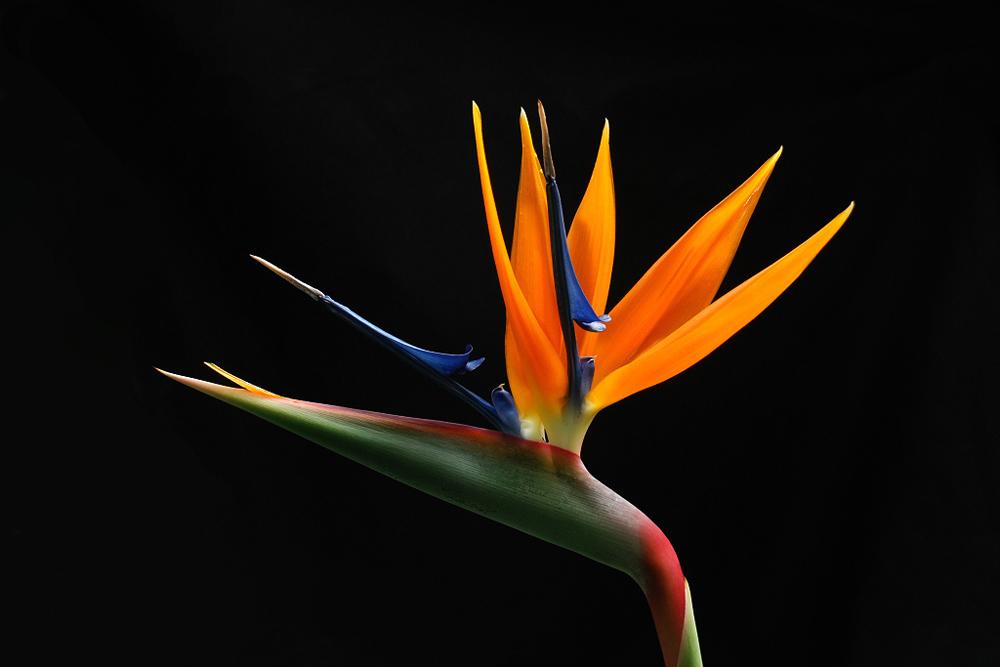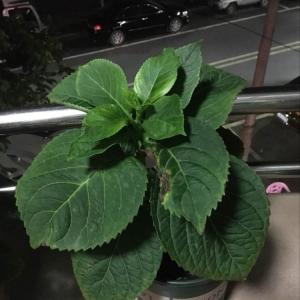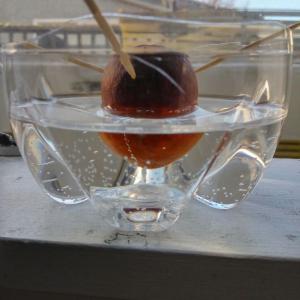文章
Colour_
2017年08月09日


一旦出现叶片东倒西歪的现象,也不必惊慌,可通过以下方法解决:
(1)如果盆内还有空间,首先培土固定根部;
(2)经常转动花盆,利用植物趋光性调整叶片方向;
(3)通过阳光直射、适度低温、控制浇水等方法,延缓生长速度;
(4)适当修剪,降低茎叶高度,保证株型挺拔美观。
修剪要切记“适度”原则,建议每次不超过1厘米,可多次修剪。蓓蕾期修剪更要慎重,个别花友一剪子下去,花蕾也随之落下,十分可惜。修剪时剪口尽量保持一定斜度,使叶形更加自然。
0
0
文章
Colour_
2017年08月09日


1、食用价值:米兰是人们喜爱的花卉植物,花放时节香气袭人。作为食用花卉,可提取香精。如米兰花茶。
2、观赏价值:米兰盆栽可陈列于客厅、书房和门廊,清新幽雅,舒人心身。在南方庭院中米兰又是极好的风景树。
3、药用价值:
【性味】味辛甘,性平。
【归经】入肺、胃、肝三经。
【功用主治】解郁宽中,催生,醒酒,清肺,醒头目,止烦渴。治胸膈胀满不适,噎膈初起,咳嗽及头昏。
2
0
文章
Colour_
2017年08月09日

养护#夜来香 的注意事项:
1、盆栽小植株,应该给它放在半阴处或疏荫下。长期放置在半阴环境中的木本夜来香,不要突然移到强光下,否则很容易使叶片被灼伤。
2、长期放置在阳台上的盆栽植株,可以在夏季把其稍向内侧移动一些便,但在正午也要根据阳光强烈程度进行适当的遮阳处理。在春秋两季,夜来香可以接受全光照,冬季应该把它放置在光照充足的南向窗前。
3、最适合夜来香生长的温度在20~30℃,在夏季气温超过32℃时,要给花卉用遮阴网或者搭棚的方法进行遮阴,还可以对给环境喷水,以增加湿度,降低温度,给花卉创造一个比较潮湿凉爽的环境。到10月中下旬,随着气温的降低,要及时将其移入室内,一般在气温下降到5℃左右时,就要将其移入室内,如果温度低于5℃,植株的叶片就会枯黄脱落甚至被冻死。
4、花果期管理:夜来香花期从5到10月不断,7~9月为盛花期,每个花序可开花10~100朵,经7~8天始衰。在植株孕蕾前要注意施肥,促使开花鲜艳美丽,花后要注意修剪,枯枝枯花,防止浪费养分,并及时补充肥料,以便促其再次开花。夜来香喜光,如果想要延迟花期,可以减少光照时间,也可以通过降低温度的方法,降低其新陈代谢的速度,确保花期延后。

1、盆栽小植株,应该给它放在半阴处或疏荫下。长期放置在半阴环境中的木本夜来香,不要突然移到强光下,否则很容易使叶片被灼伤。
2、长期放置在阳台上的盆栽植株,可以在夏季把其稍向内侧移动一些便,但在正午也要根据阳光强烈程度进行适当的遮阳处理。在春秋两季,夜来香可以接受全光照,冬季应该把它放置在光照充足的南向窗前。
3、最适合夜来香生长的温度在20~30℃,在夏季气温超过32℃时,要给花卉用遮阴网或者搭棚的方法进行遮阴,还可以对给环境喷水,以增加湿度,降低温度,给花卉创造一个比较潮湿凉爽的环境。到10月中下旬,随着气温的降低,要及时将其移入室内,一般在气温下降到5℃左右时,就要将其移入室内,如果温度低于5℃,植株的叶片就会枯黄脱落甚至被冻死。
4、花果期管理:夜来香花期从5到10月不断,7~9月为盛花期,每个花序可开花10~100朵,经7~8天始衰。在植株孕蕾前要注意施肥,促使开花鲜艳美丽,花后要注意修剪,枯枝枯花,防止浪费养分,并及时补充肥料,以便促其再次开花。夜来香喜光,如果想要延迟花期,可以减少光照时间,也可以通过降低温度的方法,降低其新陈代谢的速度,确保花期延后。

1
3
文章
Dummer. ゛☀
2017年08月08日

Family - Apiaceae
Stems - To +/-1m tall, glabrous, often glaucous, erect, herbaceous, fistulose, fragrant, branching near the apex, from a taproot.
Leaves - Alternate, petiolate below, sessile above, 2-3 ternately compound, glabrous. Petioles expanded and sheathing at the base, to 13cm long. Leaflets entire, oblong to elliptic or oblanceolate, mucronate (commonly), +/-2.5cm long, +/-1cm broad, glaucous abaxially.
Inflorescence - Terminal and lateral compound umbels with +/-10 rays per umbel. Peduncles glabrous, to +/-10cm in fruit. Rays glabrous, -4cm long. Raylets 2-5mm long. No bracts subtending any of the rays.
Flowers - Petals 5, yellow, spreading or (more commonly) inflexed, apiculate, to 2mm long. Stamens 5, exserted, erect to spreading. Filaments pale yellow, glabrous, to 2.5mm long. Anthers pale yellow, .5-.6mm long. Styles 2, +2mm long, spreading and twisted, glabrous, whitish at the base, purplish near the apex. Stylopodium green, thick. Ovary inferior, slightly compressed, glabrous, 2-locular. One seed per locule. Flowers have a tendency to be either pistillate (with reduced to no stamens) or staminate (with reduced pistil).
Flowering - May - July.
Habitat - Rocky and dry open woods or upland woods, prairies, ledges along bluffs.
Origin - Native to U.S.
Other info. - This species can be found through Missouri but is most common in the Ozarks. The plant is easy to ID either in flower or vegetatively because of its big leaves, which have oblong and entire leaflets. In flower, of course, the yellow flowers are a good characteristic for ID as no other member of our flora has the plants distinct combination of yellow flowers and oblong leaflets.
Stems - To +/-1m tall, glabrous, often glaucous, erect, herbaceous, fistulose, fragrant, branching near the apex, from a taproot.
Leaves - Alternate, petiolate below, sessile above, 2-3 ternately compound, glabrous. Petioles expanded and sheathing at the base, to 13cm long. Leaflets entire, oblong to elliptic or oblanceolate, mucronate (commonly), +/-2.5cm long, +/-1cm broad, glaucous abaxially.

Inflorescence - Terminal and lateral compound umbels with +/-10 rays per umbel. Peduncles glabrous, to +/-10cm in fruit. Rays glabrous, -4cm long. Raylets 2-5mm long. No bracts subtending any of the rays.
Flowers - Petals 5, yellow, spreading or (more commonly) inflexed, apiculate, to 2mm long. Stamens 5, exserted, erect to spreading. Filaments pale yellow, glabrous, to 2.5mm long. Anthers pale yellow, .5-.6mm long. Styles 2, +2mm long, spreading and twisted, glabrous, whitish at the base, purplish near the apex. Stylopodium green, thick. Ovary inferior, slightly compressed, glabrous, 2-locular. One seed per locule. Flowers have a tendency to be either pistillate (with reduced to no stamens) or staminate (with reduced pistil).

Flowering - May - July.
Habitat - Rocky and dry open woods or upland woods, prairies, ledges along bluffs.
Origin - Native to U.S.
Other info. - This species can be found through Missouri but is most common in the Ozarks. The plant is easy to ID either in flower or vegetatively because of its big leaves, which have oblong and entire leaflets. In flower, of course, the yellow flowers are a good characteristic for ID as no other member of our flora has the plants distinct combination of yellow flowers and oblong leaflets.

0
0
文章
Colour_
2017年08月08日

养殖#鹤望兰 的注意事项:
施撒肥料:鹤望兰在生长发育期间宜每2周施1次稀薄饼肥水,在形成花茎至盛花期可在肥液中加入0.5%的过磷酸钙,这样会使花色开得更艳丽。花谢后不准备留籽的应及时剪去残花梗,以减少养分消耗。10月中旬以后停止施肥。
繁殖要点:常用分株法和播种繁殖。
1、分株繁殖:常在春季4月中下旬进行,选优良健壮的母株,每一丛株可分成3~4棵新株,宜顺自然分界分割,用草木灰和硫磺粉涂抹伤口,而后即行栽种。
2、播种繁殖:宜在种子成熟后随采随播,播前可将种子放在粗沙中搓擦,使外层种皮被磨去一些,或用浓硫酸作适当处理,再用清水洗净后播于沙床内,点播的株行距约3~6厘米,覆沙0. 5cm播种期常在4月中下旬,播后浇足透水,上盖塑料布保湿,经2~4周萌发胚根,6~7周时叶尖出土,少数种子可能当年不发芽,到次年才能萌发。一般在长有5~6枚叶片时进行上盆定植。
浇水要点:浇水多少要随季节变化、植株生长状况和土壤实际干湿程度而定。一般地说,浇水要见干见湿,夏季浇水要充足,春、夏季节还要经常向叶面上喷水和向花盆周围地面上洒水,以提高空气湿度,创造凉爽环境,有利其生长发育。深秋以后要减少浇水,冬季要控制浇水,以保持盆土偏干些为好。
盆土更换:一般幼苗期宜每年换1次盆。开花后的成株,可每隔1年换1次盆。换盆时将鹤望兰植株整丛从土中挖起(尽量多带根系),待能明显分清根系及芽与芽间隙后,根据植株大小在保证每小丛分株苗有2~3个芽的前提下合理选择切入口,用快刀从根茎的空隙处将母株分成2~3丛。切口应沾草木灰,并在通风处晾干3~5小时,过长的根可适当短截,即可种植。
病虫防治:鹤望兰易患根腐病、灰霉病、细菌性立枯病,炭疽病,播种前需在温水中浸泡种子且消毒土壤。

施撒肥料:鹤望兰在生长发育期间宜每2周施1次稀薄饼肥水,在形成花茎至盛花期可在肥液中加入0.5%的过磷酸钙,这样会使花色开得更艳丽。花谢后不准备留籽的应及时剪去残花梗,以减少养分消耗。10月中旬以后停止施肥。
繁殖要点:常用分株法和播种繁殖。
1、分株繁殖:常在春季4月中下旬进行,选优良健壮的母株,每一丛株可分成3~4棵新株,宜顺自然分界分割,用草木灰和硫磺粉涂抹伤口,而后即行栽种。
2、播种繁殖:宜在种子成熟后随采随播,播前可将种子放在粗沙中搓擦,使外层种皮被磨去一些,或用浓硫酸作适当处理,再用清水洗净后播于沙床内,点播的株行距约3~6厘米,覆沙0. 5cm播种期常在4月中下旬,播后浇足透水,上盖塑料布保湿,经2~4周萌发胚根,6~7周时叶尖出土,少数种子可能当年不发芽,到次年才能萌发。一般在长有5~6枚叶片时进行上盆定植。
浇水要点:浇水多少要随季节变化、植株生长状况和土壤实际干湿程度而定。一般地说,浇水要见干见湿,夏季浇水要充足,春、夏季节还要经常向叶面上喷水和向花盆周围地面上洒水,以提高空气湿度,创造凉爽环境,有利其生长发育。深秋以后要减少浇水,冬季要控制浇水,以保持盆土偏干些为好。
盆土更换:一般幼苗期宜每年换1次盆。开花后的成株,可每隔1年换1次盆。换盆时将鹤望兰植株整丛从土中挖起(尽量多带根系),待能明显分清根系及芽与芽间隙后,根据植株大小在保证每小丛分株苗有2~3个芽的前提下合理选择切入口,用快刀从根茎的空隙处将母株分成2~3丛。切口应沾草木灰,并在通风处晾干3~5小时,过长的根可适当短截,即可种植。
病虫防治:鹤望兰易患根腐病、灰霉病、细菌性立枯病,炭疽病,播种前需在温水中浸泡种子且消毒土壤。

1
3
文章
Colour_
2017年08月08日


#鹤望兰 叶片发黄原因
1、根系发育受到影响,导致吸水受阻而产生叶黄,如浇水过多、施肥过浓等。
2、缺肥。长期不翻盆或没有及时施肥,都会使植株缺肥而变黄,其症状首先表现在老叶上。
3、土壤偏碱。鹤望兰喜PH5.5—6.5的微酸性土壤,在碱性土壤中叶片会黄化,其症状主要表现在长出的新叶上。
4、夏天烈日曝晒。鹤望兰忌烈日,光照过烈时叶片发黄。只要分析出产生黄叶的原因并采取相应的措施,即可使鹤望兰的叶片长得青翠欲滴。
0
0
文章
Colour_
2017年08月08日


鹤望兰的花期在冬春两季。如您莳养的鹤望兰株龄在2年以上,在孕蕾期注意以下几个问题,则定能使它开出美丽的花朵。
1、光照鹤望兰属喜光植物,需给予植株充足的光照。如见光少会直接影响开花,还会使植株徒长,即使开花,其花形和花色也不美。
2、浇水鹤望兰具肥粗的肉质根,浇水须视盆土干湿情况而定,一般1周左右浇透水1次,土稍潮为宜,千万不能使盆内积水,否则易烂根。
3、温度鹤望兰原产南非,要求生长温度在16~18℃。花前期可按此温度偏低控制,这样既有利于花蕾的形成,又能有效地减少和防止病虫害的发生。
4、施肥施肥宁淡勿浓,宜淡肥勤施,用含磷、钾经腐熟稀释的液肥为佳,2周施1次即能满足开花结果的需要。
0
0
文章
Miss Chen
2017年08月08日


With large paddle-shaped fleshy green leaves edged in red, flapjack kalanchoe (Kalanchoe thyrsiflora), more commonly called simply flapjack, it makes a visual splash in the garden. It grows between 10 inches and 2 feet tall in a rosette pattern with the leaves growing out of the center stalk. Flapjack grows outdoors in U. S. Department of Agriculture plant hardiness zones 9 through 11 or as a houseplant. You can also treat it as an annual in cooler climates. A low-maintenance perennial succulent, flapjack needs minimal care to thrive.
Fertilize Sparingly
Fertilize flapjack two to four times per year with the first application in the spring when new growth starts. Apply the last fertilizer in the fall then stop through the winter. Use a slow-release, balanced fertilizer, such as a 10-10-10 product, to supply continuous nutrients between feedings. Use 1 tablespoon for each 1 square foot of area around each plant. For larger beds, use 1 cup per 30 for each square feet.
Water Lightly
Flapjack is a drought-tolerant succulent. Allow the soil to dry out on top between waterings. When watering, soak the soil 6 inches deep.
Container Growing
Flapjack grows well in pots, either indoors or outside. Indoors, set the bots in a bright room with indirect light, ideally in a spot between 50 and 50 degrees Fahrenheit. Outside, keep the pots in a sunny area of the patio or porch or set the planters in the garden.
Fertilizing Container Plants
Fertilize a container-grown flapjack every other week with 1/2 teaspoon of balanced 15-15-15 fertilizer. Mix the fertilizer into 1 gallon of water and use it to water the plant.

Watering Container Plant
Water a flapjack in a planter until the soil is thoroughly damp and extra water starts to leak out the drainage holes in the bottom, then wait to water until the top of the soil looks dry.
Overwintering Indoors
In USDA zones 9 and below, grow flapjack in planters outdoors in the summer and overwinter them inside. In fall, before the first freeze, move the pots to a sunny spot that stays between 50 and 60 F. Stop fertilizing for the winter and water only when the soil feels dry. In spring, after the last frost, return the container-grown flapjack outside.
Pests and Problems
Flapjack doesn't attract pests and rarely suffers from diseases and other problems.
Pruning and Trimming
This tidy succulent doesn't require any pruning or trimming during or after the growing season. The only exception is the flower stalk. After the flapjack flowers, cut out the dead flower stalk where it attaches to the main plant. Flapjack is grown as a foliage plant, and flowers only appear after three to four years, so in general you can get by without any pruning.
1
1
文章
Colour_
2017年08月08日

#杜鹃花 的日常养护
关于浇水
杜鹃对土壤干湿度要求是润而不湿。一般春秋季节,对露地栽种的杜鹃可以隔2—3天浇一次透水,在炎热夏季,每天至少浇一次水。日常浇水,切忌用碱性水,浇水时还应注意水温不宜过冷,尤其在炎热夏天,用过冷水浇透,造成土温骤然降低,影响根系吸水,干扰植株生理平衡。
关于施肥
在每年的冬末春初,最好能对杜鹃园施一些有机肥料做基肥。4—5月份杜鹃开花后,由于植株在花期中消耗掉大量养分,随着叶芽萌发,新梢抽长,可每隔15天左右追一次肥。入伏后,枝梢大多已停止生长,此时正值高温季节,生理活动减弱,可以不再追肥。秋后,气候渐趋凉爽,且时有秋雨绵绵,温湿度宜于杜鹃生长,此时可做最后一次追肥,入冬后一般不宜施肥。
关于修枝
修剪整枝是日常维护管理工作中的一项重要措施,它能调节生长发育,从而使长势旺盛。日常修剪需剪掉少数病枝、纤弱老枝,结合树冠形态删除一些过密枝条,增加通风透光,有利于植株生长。对于杜鹃园须经常检查,发现有枯枝、病枝,应及时清除,以减少病虫害在杜鹃中蔓延。

关于浇水
杜鹃对土壤干湿度要求是润而不湿。一般春秋季节,对露地栽种的杜鹃可以隔2—3天浇一次透水,在炎热夏季,每天至少浇一次水。日常浇水,切忌用碱性水,浇水时还应注意水温不宜过冷,尤其在炎热夏天,用过冷水浇透,造成土温骤然降低,影响根系吸水,干扰植株生理平衡。
关于施肥
在每年的冬末春初,最好能对杜鹃园施一些有机肥料做基肥。4—5月份杜鹃开花后,由于植株在花期中消耗掉大量养分,随着叶芽萌发,新梢抽长,可每隔15天左右追一次肥。入伏后,枝梢大多已停止生长,此时正值高温季节,生理活动减弱,可以不再追肥。秋后,气候渐趋凉爽,且时有秋雨绵绵,温湿度宜于杜鹃生长,此时可做最后一次追肥,入冬后一般不宜施肥。
关于修枝
修剪整枝是日常维护管理工作中的一项重要措施,它能调节生长发育,从而使长势旺盛。日常修剪需剪掉少数病枝、纤弱老枝,结合树冠形态删除一些过密枝条,增加通风透光,有利于植株生长。对于杜鹃园须经常检查,发现有枯枝、病枝,应及时清除,以减少病虫害在杜鹃中蔓延。

1
2
















